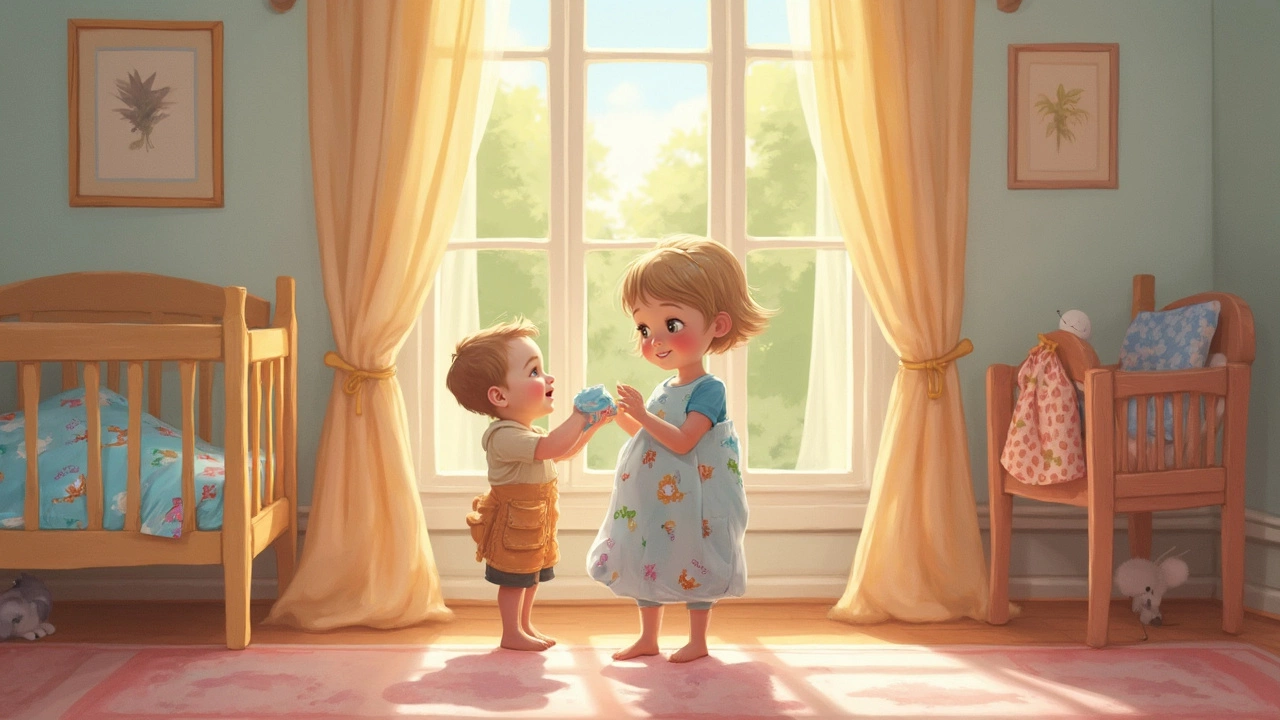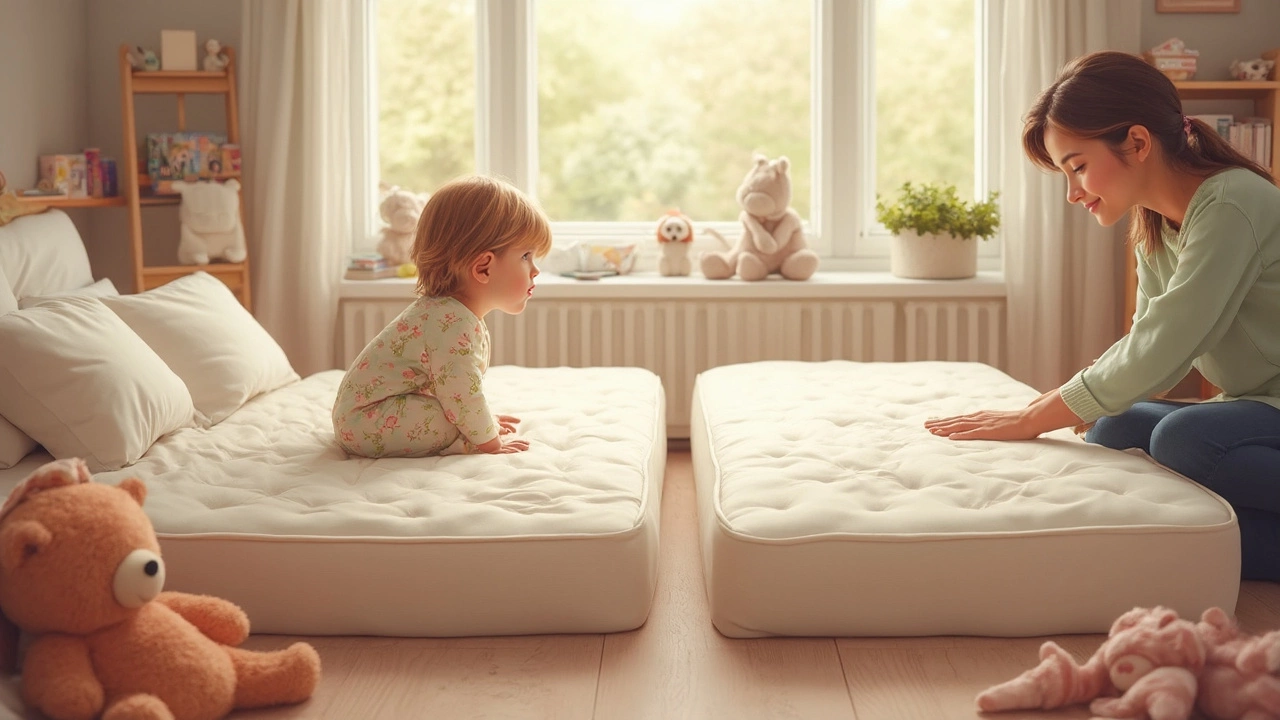When to Stop Sleep Sacks: Signs Your Toddler is Ready

Sleep sacks are a life-saver during babyhood. They keep your little one cozy and lower the risk of those scary blanket mishaps. But hang around at a toddler playdate, and you’ll hear the same question: When should you actually stop using them?
Most kids outgrow sleep sacks sometime between 18 months and three years old. But it’s not about birthdays—there are clear signs that tell you your kid’s ready to move on. For example, if they fight the sack, try to unzip it themselves, or suddenly start climbing out of the crib, it’s probably time.
If you’re second-guessing, don’t worry. There are things you can look for and next steps you can take to make the switch easy on everyone (including your own sleep schedule). Many parents transition out of sleep sacks as their kids move to a toddler bed. Others notice their child simply doesn’t want to wear one anymore—Finn flat-out refused his the week we set up his new bed.
- Why Sleep Sacks Are Great (But Not Forever)
- Spotting Signs Your Toddler is Ready
- How to Ease the Transition
- Common Questions and Troubleshooting
Why Sleep Sacks Are Great (But Not Forever)
Sleep sacks have earned their place in bedtime routines. When your baby’s too little for a blanket, a sleep sack acts like a wearable hug. It keeps them warm without the loose covers that can sneak up over the face, cutting down the risk of suffocation. The American Academy of Pediatrics has said sleep sacks are one of the safest sleep choices for young kids who still sleep in a crib.
You also dodge those midnight wakeups because of lost blankets. Let’s be real—untangling a screaming toddler at 2 a.m. is no one’s favorite job. Sleep sacks stay put. There’s no shifting around in the night, and most designs even keep diaper access easy for those half-awake changes.
Another plus is that some kids start to see their sleep sack as a bedtime cue. Put the sack on and bedtime just feels familiar. If your kiddo fights naps, that routine can be gold.
But, here’s the thing—they don’t last forever. Once your child gets more active in the crib, they might want to climb, stand, or just do wild toddler gymnastics. At a point, a sleep sack can limit movement. Also, as your child heads toward the toddler bed stage, those grabby little hands might start figuring out zippers—Muffin the cat may be the only one with more mischief after dark.
Bottom line: sleep sacks are safe and practical for babies and young toddlers, but kids grow out of them, both physically and developmentally. The trick is knowing when to move on, so everyone keeps sleeping soundly and safely.
Spotting Signs Your Toddler is Ready
This might sound wild, but not every kid will hit this moment at the same age. You’ll see some clear hints when your toddler is ready to say goodbye to the sleep sacks. Forget about hitting a magic birthday—watch for real-life changes instead.
First, watch out for escape attempts. If your toddler is trying to kick off, unzip, or completely wriggle out of their sleep sack every nap or night, that’s a giant red flag. Some kids go full Houdini in their cribs. The second you see them trying to stand up or climb while still wearing the sack, it’s time to rethink it for safety reasons.
Next, check if they’re moving to a toddler bed soon. Most parents switch to blankets when making this move, since sleep sacks can get in the way of moving freely and safely in and out of bed. If your child can walk confidently, climb, and potty train (or is working on it), a sleep sack can actually start to cause more hassle.
See if your kid is acting frustrated when you put the sleep sack on. Maybe they just fight you at bedtime, complain, or even ask not to wear it anymore. That’s usually a sign of wanting more independence. A lot of toddlers start picking which pajamas they want, and some want to graduate to using a “big kid” blanket just like their older siblings.
Here’s a quick list to make it easy:
- Trying to take off the sleep sack (unzipping, wiggling out, kicking it off)
- Standing, trying to climb, or falling in the crib because of the sack
- Moving to a toddler bed soon or already there
- Potty training or needing easier access for bathroom trips at night
- Showing frustration or asking for a blanket instead
Just keep in mind: some kids are attached to their sleep sacks and that’s okay for a while. You know your kid best. If they’re happy and safe, don’t feel rushed. But if you spot any of these signs, it’s probably time to plan for the transition.

How to Ease the Transition
Letting go of the sleep sack can feel like a big leap—for you and your toddler. A steady and relaxed approach works best. Not every kid reacts the same way, but there are some tried-and-tested tips that make the process smoother.
- Start with naps. Instead of making nighttime and naps sack-free at the same time, try dropping it at nap first. If your child manages, then try bedtime.
- Pick a warm week. If you’re ditching the sack, make sure it’s not a chilly season—your toddler will miss that extra warmth. Go for a room temp between 68-72°F (20-22°C), which sleep experts say is the sweet spot for little ones.
- Get your toddler involved in picking a new blanket. Letting them choose a pattern or character makes them way more likely to use it.
- Keep the bedtime routine steady. Don’t change too much at once—no new bed and no new pajamas all in the same week. Small, gradual changes help kids feel secure.
- Consider a transitional product. Some kids find comfort in wearable blankets with foot openings, giving them freedom but a little extra coverage.
Kids' sleep changes usually bring ups and downs, so expect a few rocky nights. But on average, most toddlers adjust within about 5-7 days. Check out this quick table on what to expect during the transition:
| Day | What You Might Notice |
|---|---|
| 1-2 | Some resistance, asking for the sleep sack back |
| 3-4 | May wake up more often or move around a lot |
| 5-7 | Settling in, using new blanket or falling asleep without extra fuss |
One more thing—having a sleep sack handy for backup never hurts. Sometimes, toddlers change their minds or need extra comfort during big transitions. Stay flexible, respond to their cues, and trust that the new bedtime routine will stick soon.
Common Questions and Troubleshooting
When parents decide whether to ditch the sleep sack, a whole bunch of questions pop up, usually right at bedtime—when you really just want everyone sleeping. So let’s tackle the big issues, no fluff, just real answers and solutions.
sleep sacks can feel like a security blanket (pun intended). Your toddler might ask for it out of habit, even after you think it’s time to move on. That’s normal. A 2022 survey showed that more than 45% of parents kept using them past age two simply because their kids wanted the cozy feeling. If your toddler is attached, try letting them hold the sack like a lovey when they first transition to a blanket. That way, the comfort doesn’t disappear overnight.
Worried about your little one getting cold? The general rule: dress them in one more layer than you would wear to bed. A long-sleeve pajama set usually does the trick, and fleece PJs are gold in winter. Test the room temperature too—the sweet spot is between 68 and 72°F (20 to 22°C). If you’re not sure, check the back of their neck; it shouldn’t feel sweaty or cold.
If your toddler starts kicking off blankets and waking up chilly, you’re not alone. Most toddlers do this for a while before getting the hang of blankets. You can:
- Use a wearable blanket with feet for extra warmth during the transition period.
- Tuck blankets under the mattress so they stay put at least half the night.
- Go for footed pajamas and skip blankets till your child shows interest in them.
Maybe your child wakes up more often after losing the sleep sack. Routine helps! Stick to a familiar bedtime routine—bath, story, the usual pre-bed snuggles. Reassure them that the new bedtime setup is safe and cozy.
And finally, parents sometimes wonder about safety. Blankets are fine for most kids after age one, according to the American Academy of Pediatrics, especially if they’re in a toddler bed. Just avoid heavy quilts or anything with strings and ties.
If you run into bumps—whether it’s constant wake-ups or endless requests for the old sleep sack—remember: transitions are normal. It won’t last forever, and soon, that sleep sack will just be another thing gathering dust in the closet (right next to Muffin’s forgotten cat toys).


